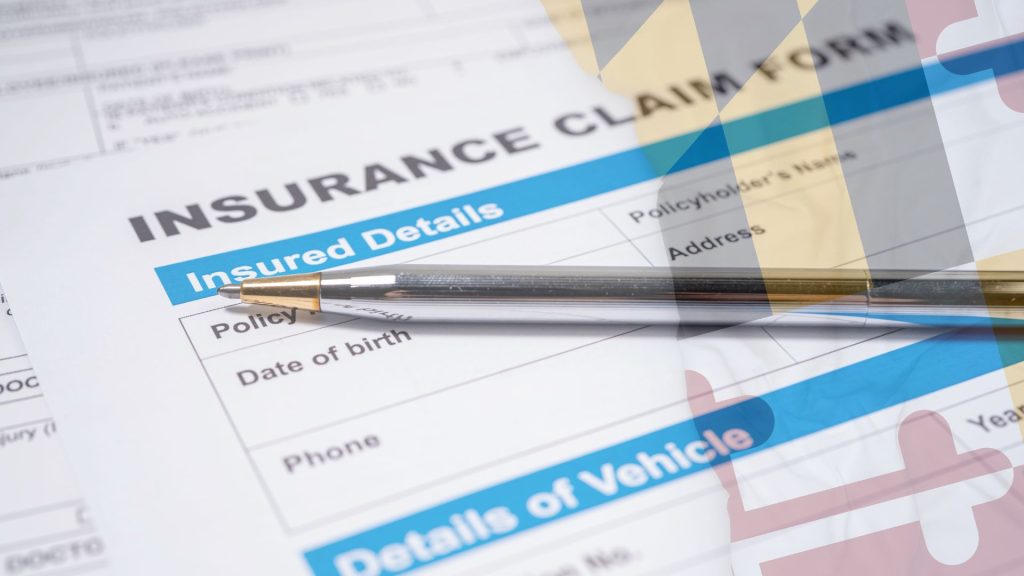In insurance and Maryland car accident law, we often use terms interchangeably without truly understanding the definitions and meanings of the term. People call us all the time and say they have full coverage so they assume they have a great insurance policy with tons of coverage. In many, cases, they don’t.
One term that misleads is “full coverage,” a term which is often misinterpreted as indicating that someone has a large of full amount of auto insurance coverage when it actually means quite the opposite in most contexts.
Full Coverage Insurance
Often mistaken due to its name, full coverage insurance does not mean you have a high coverage limit. This type of insurance refers to a policy that includes both collision and comprehensive coverage.

Generally, a full coverage insurance policy, as people use it, refers a combination of different types of coverage, such as liability coverage, collision coverage, and comprehensive coverage.
- Liability Coverage: This is a fundamental component of any auto insurance policy and is required in most states. Liability coverage helps protect you financially if you cause an accident that results in injury to another person or damage to their property. It typically includes two types of coverage: bodily injury liability and property damage liability.
- Collision Coverage: This coverage is specifically designed to pay for repairs or replacement of your vehicle in the event of a collision, regardless of fault. If your vehicle collides with another vehicle, object, or even flips over, collision coverage can help cover the costs of repairing or replacing your car, up to the policy’s limits, minus the deductible.
- Comprehensive Coverage: This coverage provides protection against damage to your vehicle caused by non-collision incidents. It covers events such as theft, vandalism, fire, natural disasters (like hurricanes or floods), falling objects, and collisions with animals. Similar to collision coverage, comprehensive coverage has policy limits and a deductible.
It’s important to note that full coverage insurance does not necessarily mean you are completely protected from all risks and expenses. There may still be limitations, exclusions, and deductibles associated with each type of coverage.
Full Coverage Is Misleading
While the term “full coverage” may lead some to believe that it covers every possible scenario, it’s important to note that there is no standard definition of full coverage, and the extent of coverage can vary depending on the insurance company and policy.
Additionally, full coverage insurance typically does not include coverage for medical expenses or personal injury protection, which may be required or offered separately depending on the state where you reside.
Ultimately, the goal of full coverage insurance is to provide a higher level of protection for both your vehicle and potential liability in various situationsns.
Collision coverage relates to damages incurred to your vehicle as a result of a collision, while comprehensive coverage caters to damages caused by non-collision incidents such as theft or fire. In addition, full coverage insurance often includes liability coverage. The alternative to full coverage insurance is typically liability-only coverage, which offers significantly less protection.
Full Coverage Does Not Equal a Lot of Insurance Coverage
You can have full coverage on your auto insurance policy in Maryland and have the minimum $30,000 insurance policy. Having a small insurance policy for liability and uninsured motorist coverage leave you holding the bag when you are injured and the other driver does not have enough coverage. If you are at fault for a crash, it can leave you with liability beyond your insurance coverage limits.
So a “full coverage” policy with low limits may not give you sufficient coverage to protect against potential liabilities in the event of an accident. If a car accident occurs and the damages exceed the policy limits, the policyholder may be personally responsible for the remaining costs. This can lead to financial hardship, as medical expenses, property damage, and legal fees can quickly escalate.
We represent victims in car accident cases so our lawyers usually do not see this problem. Instead, what our attorneys see all the time is a victim is injured by an uninsured or underinsured motorist, and their small small uninsured motorist coverage policy does not serve as an adequate backstop. This happens when the at fault driver does not have insurance or carries only minimal coverage. This can lead to a victim having limited options for recovering damages related to medical expenses, lost wages, and pain and suffering.
- Allstate tells you point blank that full coverage is not a real insurance term
What Are Maryland’s Minimum Auto Insurance Requirements?
Maryland drivers/vehicles are required to have a certain minimum amount of auto insurance coverage. The minimums are different for each part or type of coverage, The chart below shows the minimum insurance requirements in Maryland for the various types of coverages.
| Liability (Bodily Injury)
Liability insurance covers amounts you could be forced to pay if you cause bodily injuries to other drivers in an accident that is your fault.
|
$30,000 per person / $60,000 per accident |
| Property Liability
This covers the cost of fixing damages to other vehicles if you cause an accident.
|
$15,000 |
| Uninsured Motorist
Uninsured or underinsured motorist (UIM) coverage pays for damages in accidents where the other driver has no insurance, or doesn’t have enough insurance to cover your damages. This also covers hit and run accident.
|
$30,000 per person / $60,000 per accident |
| Person Injury Protection
Helps covers additional expenses for damages to vehicles.
|
Limit of $2,500 |
 Maryland Accident Lawyer Blog
Maryland Accident Lawyer Blog

